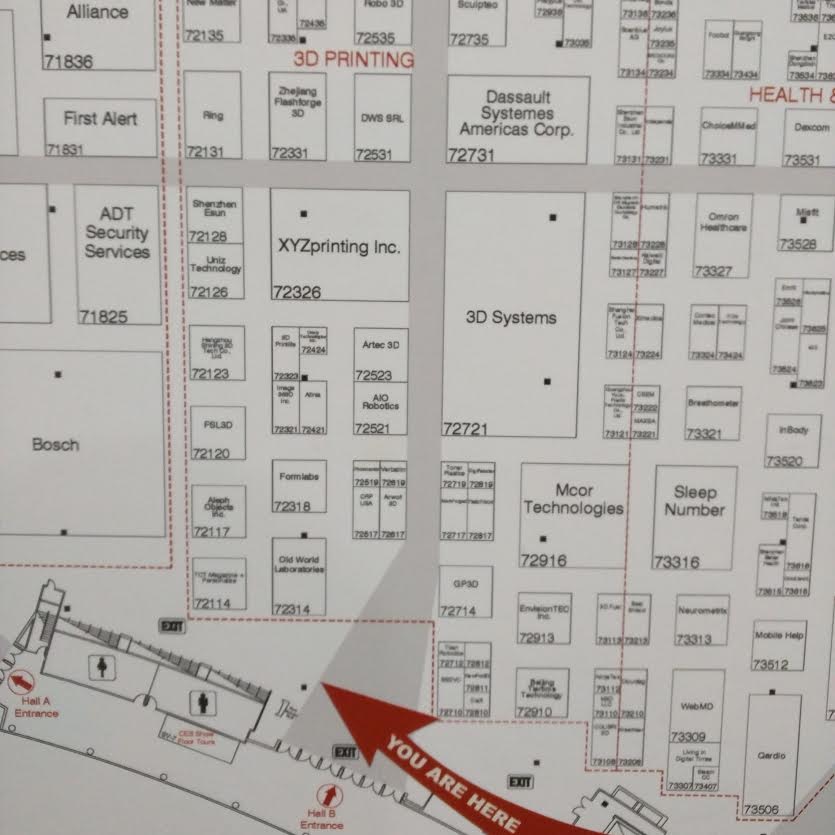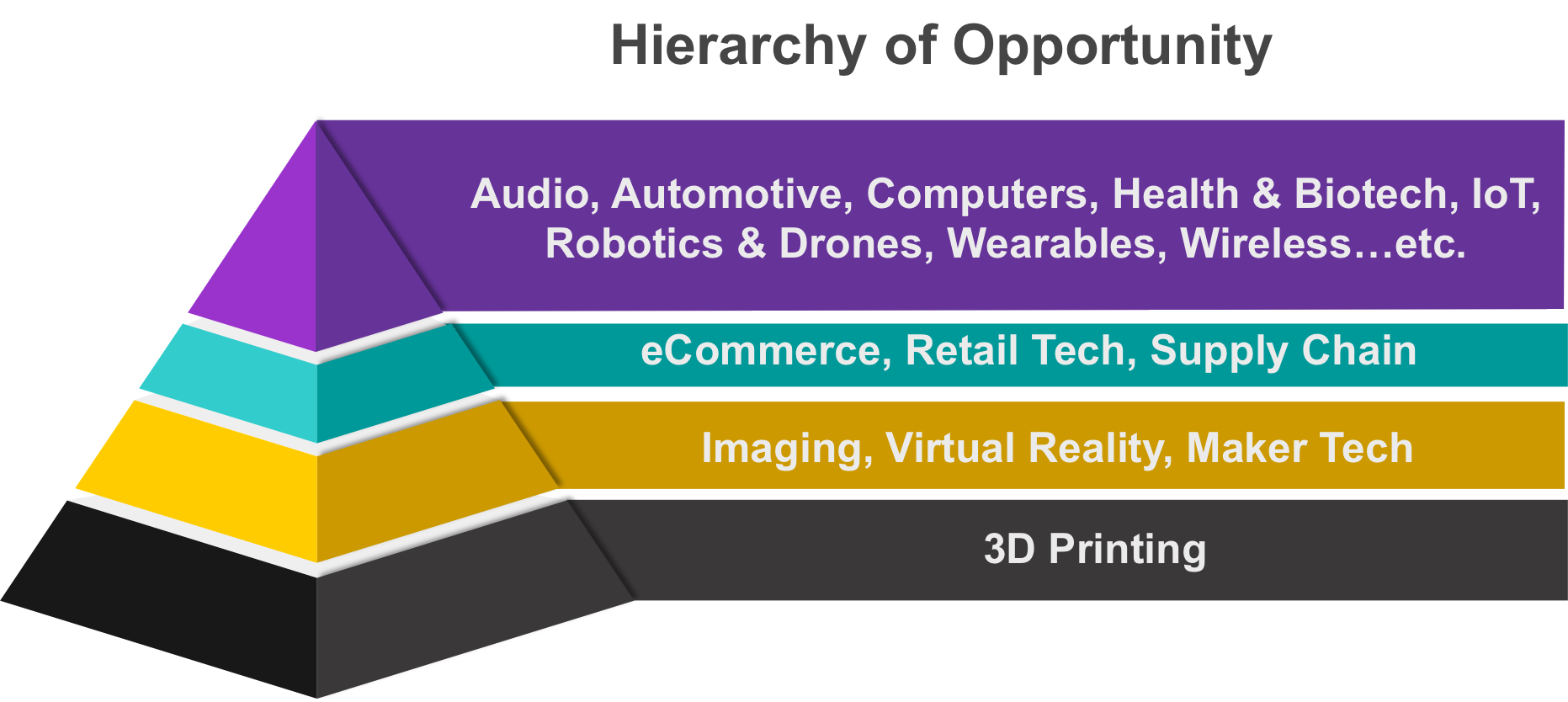 I’m back from CES, and am just starting to feel normal again. Maybe it’s all the people? Over 170,000 attended this year. After a while it starts to weigh on you. Lines at the airport, lines for a cab, lines at the hotel, lines at the show, lines for food…and lines for a damn drink.
I’m back from CES, and am just starting to feel normal again. Maybe it’s all the people? Over 170,000 attended this year. After a while it starts to weigh on you. Lines at the airport, lines for a cab, lines at the hotel, lines at the show, lines for food…and lines for a damn drink.
Maybe it’s the sheer size of the show itself? This year over 3,800 exhibitors took up 2.4 million feet of exhibit space – including two convention centers and bunch of other sites around Las Vegas. Getting anywhere is half the battle. No one person could possibly see it all.
But what’s probably hardest, for me, is the mental gymnastics I go through at CES. Opportunity abounds…everywhere.
Managing Chaos
3D printing continues to expand at CES. This year the 3D Printing Marketplace featured over 60 companies, nearly doubling the number of exhibitors from last year. While there was still a heavy emphasis on hardware and materials, content, software and services were also represented.
But 3D printing is already impacting, or could impact nearly every other technology, service and product on display at CES.
Which got me thinking about Maslow’s Hierarchy of Needs. Basics like food, clothing and shelter must be accounted for first. Then and only then can people move on to worrying about things like security, love, and finally self-realization and actualization. Sounds a lot like CES, right?
If I was going to thrive, I’d need my own hierarchy.
So, this was my approach. Go deep in 3D, but find the time to cover the other areas that are also likely to have an impact.
Content is a King Without an Army
Let’s start there. Ask nearly anyone in the industry, and they’ll tell you that right now, there’s a serious lack of 3D printable content.
There were a few exhibitors working on that part of the problem. Source3, for example is focused on helping music, sports and other brands leverage licensing to create 3D printable products.
Also at CES, WhiteClouds announced their recent acquisition of 3DplusMe, a service which initially made its mark by scanning consumers and placing their faces on super hero figurines. I spoke with WhiteClouds’ CEO, Jerry Ropelato, and he told me, “the acquisition not only brings great talent, but also a slew of existing licensing relationships.”
Brand licensing is definitely on the rise in 3D printing. But I don’t see it as a killer app. It’s more of a “killer enabler.”
 In general, people will buy a good product, and they’ll buy even more if it identifies with a brand they’re passionate about. They’ll buy less of a poor product, no matter how it’s presented.
In general, people will buy a good product, and they’ll buy even more if it identifies with a brand they’re passionate about. They’ll buy less of a poor product, no matter how it’s presented.
More, Better Content
As the amount of content continues to grow and the quality continues to vary, search algorithms will play a more important role in helping us sift through the noise.
For a moment, imagine there is a massive database of every CAD file that’s ever been created. Let’s say you needed to replace the knob on your washing machine. How would you find it?
How do you find things like that at a hardware store? You walk in with the part and and ask someone where it’s located. They examine the part, identify it, and send you on your way to the correct aisle and bin.
During the show I had an opportunity to spend some time with the Founder and CEO of 3DIndustri.es, Dr. Seena Rejal. His company is intent on becoming the “Google of shape-based search.” Their plan is to index all of the world’s 3D printable content, then provide easier, more intuitive ways to search it.
Beyond search, companies are working to improve the process of making content sellable. 3DIndustri.es for instance can use shape recgnition to help identify intellectual property issues.
Digital Forming, another exhibitor at the show, is focused on product customization. Their software lets designers configure the customizable aspects of their products. A web plug-in guides users through the experience.
I’ve said many times that customization and personalization are great concepts, but difficult to execute. Digital Forming’s software strikes the right balance. They’ve created a tool that’s both powerful and easy to use use.
The Cost of Creation
So, work is being done to gather, index, license, and customize content. But what about raw file creation? It seems that’s the biggest challenge. Dassault Systèmes was there, demonstrating the latest version of SolidWorks and other tools, most of which are geared towards helping professional designers work more efficiently.
Don’t think I’m underestimating the value of better design software. Consider 2D printing for a moment. As desktop publishing came on the scene, and became easier to use, it democratized content creation and powered the growth of digital printing.
But 3D design is significantly more complex. Right now, there are very few people on the planet with the skills necessary to create – and only a small portion of them are interested in product design. CAD has lots of other applications.
No matter how you slice it, there’s risk in product creation. With mass production the investment is very high, often costing over $100,000 to bring a simple product to market. 3D printing and other digital technologies greatly reduce the risk, but they don’t eliminate it.
Scanning also offers huge potential, but it too requires skilled labor to achieve a print-ready product. A talented designer might be able to knock out 30 products per week. A talented scanner operator might be able to digitize 150 products in the same time span.
There’s significant cost in either activity, and the investment must deliver a return. Not every product will be a winner, but in the aggregate and over time, the revenues generated from those products must outweigh the costs of creating and preparing them.
In 3D printing, content is king, but it will require a creative army to meet the upcoming demand. No one I met with at CES is singularly focused on solving that big, nagging problem.
The Impact of Automation
There’s a lot of fear (and some excitement) out there about the impact automation has on jobs. As 3D printing continues to mature, it will itself become more automated. Over time this will probably lead to fewer production jobs – not only in 3D printing, but also in mass manufacturing.
Before the invention of desktop publishing and digital printing, the traditional 2D printing process included over 30 steps and was supported by up to 20 different people. Once digital technologies became available, and processes were optimized to support them, the same job could be produced in as few as four steps, by one person.
It seems likely the same thing will happen with 3D. But with challenges come opportunities. As the need for content grows, the ability to create it becomes more sought after and more valuable. For this reason, a lot of the people I spoke with at CES see “3D file creator” as one of the future’s top jobs.
Making an investment in content now (and the jobs that support it) could be a huge advantage later, especially now that the tools are being developed to get it indexed, licensed and sold.
In my next article, I’ll take a look at the 3D printing and finishing equipment that was on display at CES. Then, I’ll work my way up my little “hierarchy of opportunity,” sharing thoughts on how this technology might impact the other, related markets that got a lot of attention at CES 2016.
Stay tuned…
About the Author:
John Hauer is the Founder and CEO of Get3DSmart, a consulting practice which helps large companies understand and capitalize on opportunities with 3D printing. Prior to that, John co-founded and served as the CEO of 3DLT. The company worked with retailers and their suppliers, helping them sell 3D printable products, online and in-store.
John’s original content has been featured on TechCrunch, QZ.com, Techfaster.com, 3DPrint.com and Inside3DP.com, among others. Follow him on Twitter at @maverickonline
Subscribe to Our Email Newsletter
Stay up-to-date on all the latest news from the 3D printing industry and receive information and offers from third party vendors.
Print Services
Upload your 3D Models and get them printed quickly and efficiently.
You May Also Like
Nikon SLM Solutions Sells SLM 500 to Primary Weapon Systems to Expand Suppressor Production
Primary Weapons Systems (PWS) is a Boise, Idaho-based manufacturer of suppressors, firearms, and related components. A subsidiary of Vigilant Gear and a sister company to aftermarket Glock slide manufacturer Lone...
3DPOD 261: Tooling and Cooling for AM with Jason Murphy, NXC MFG
Jason Murphy´s NXC MFG (Next Chapter Manufacturing) is not a generalist service; instead, the company specializes in making tooling. Using LPBF and binder jet, the company produces some of the...
HP and Firestorm Labs Form Partnership to Use Multi Jet Fusion 3D Printers in Deployable Factories
HP Inc., maker of a range of additive manufacturing (AM) solutions including the Multi Jet Fusion (MJF) ecosystem, has announced a partnership with Firestorm Labs, a developer of containerized, deployable...
3D Printing News Briefs, July 2, 2025: Copper Alloys, Defense Manufacturing, & More
We’re starting off with metals in today’s 3D Printing News Briefs, as Farsoon has unveiled a large-scale AM solution for copper alloys, and Meltio used its wire-laser metal solution to...
































